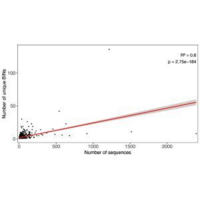Please find our new paper in Molecular Ecology:
Omics to Study and Manage Aquatic Environments: A Snapshot From the AquaEcOmics Meeting (Evian-les-Bains, 2025). https://onlinelibrary.wiley.com/doi/10.1111/mec.70041
A good summary of the keynotes/talks/posters given during the meeting, this will give us ideas for the future!




